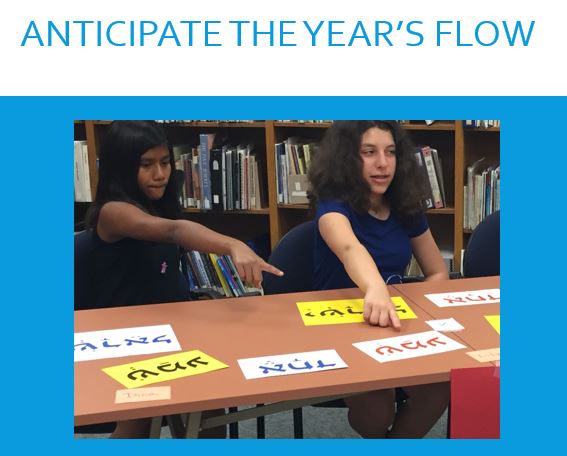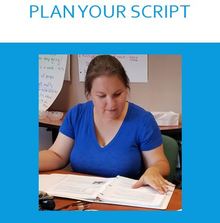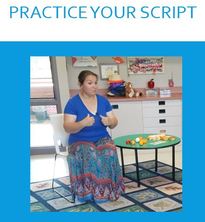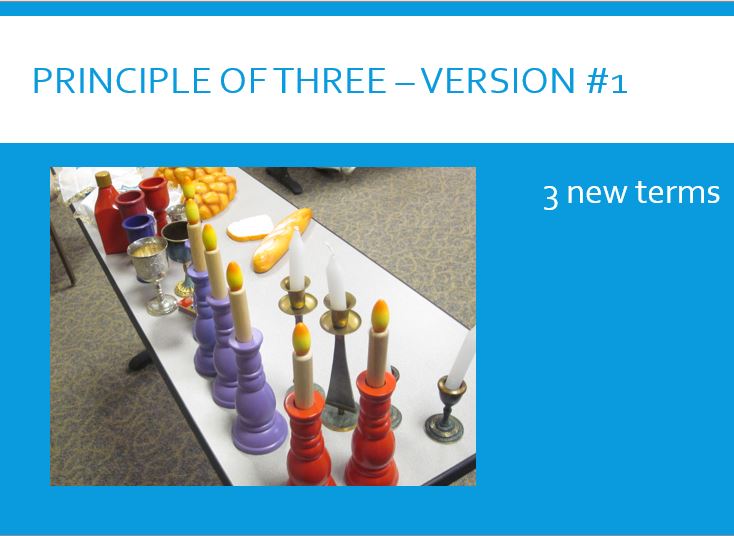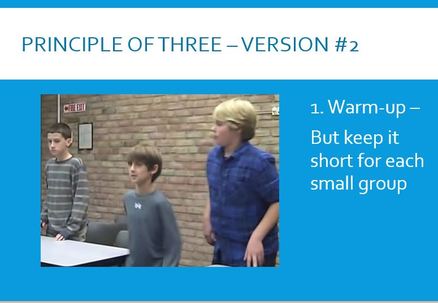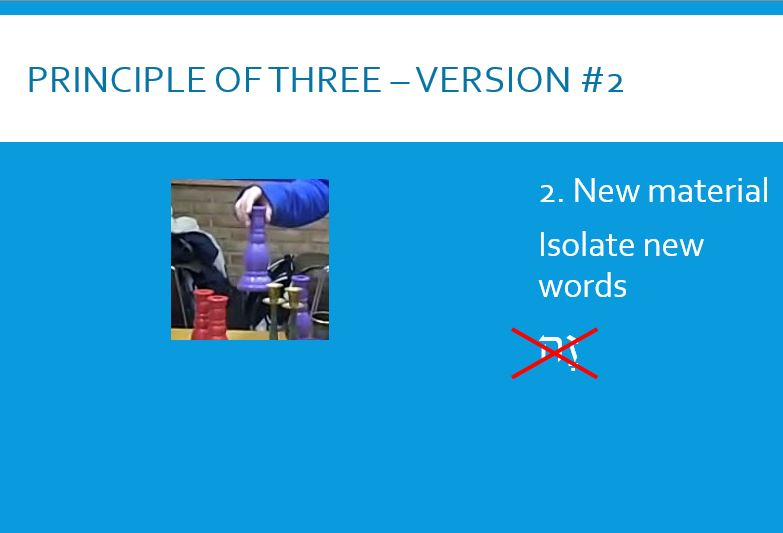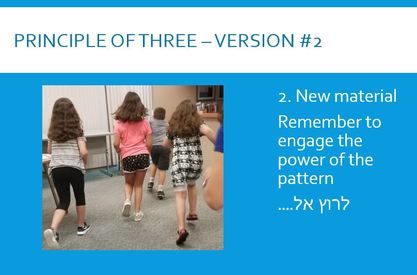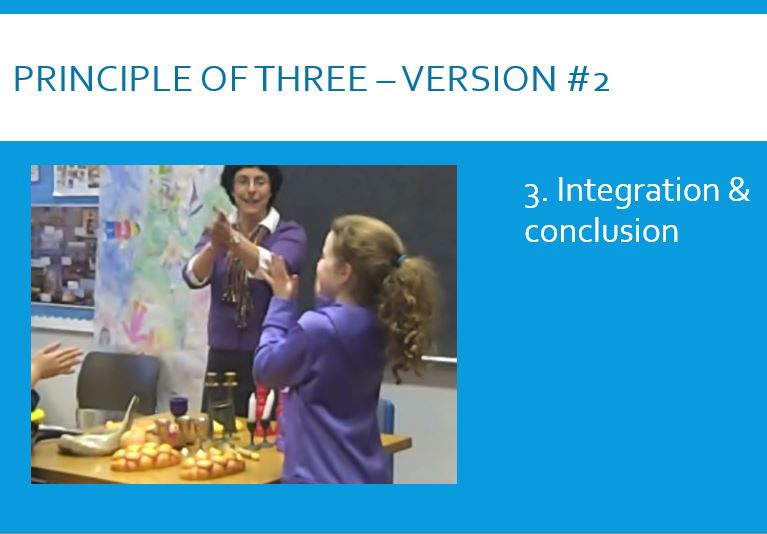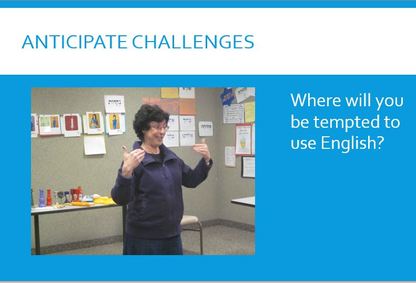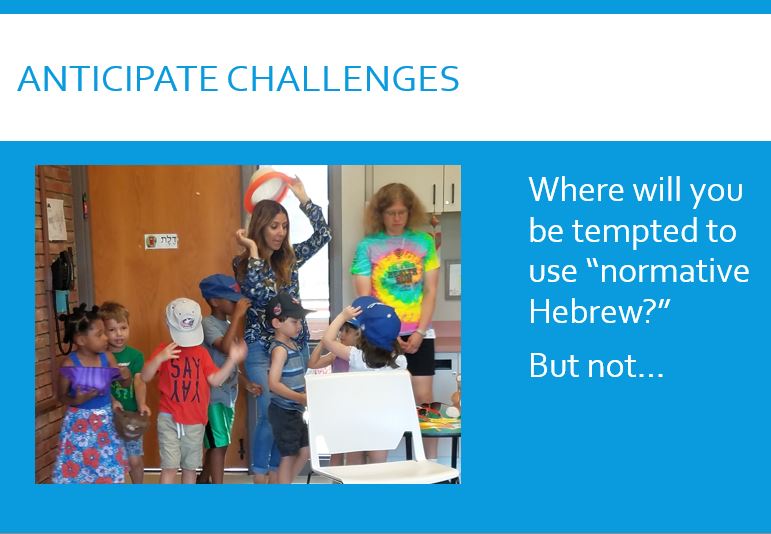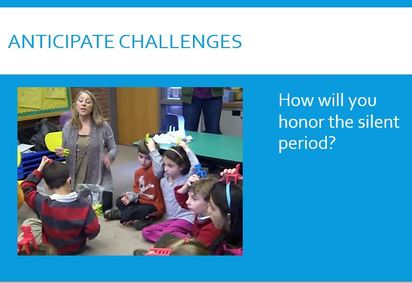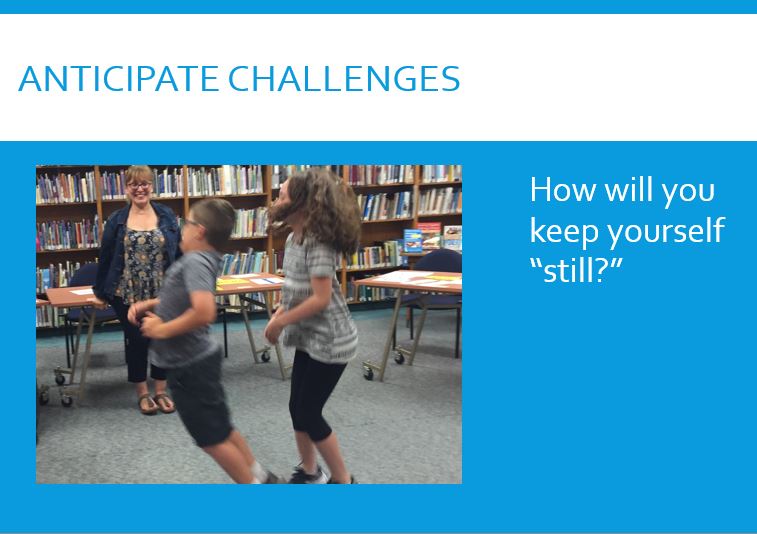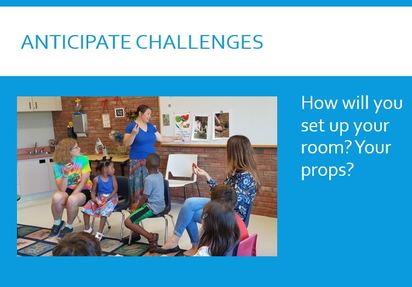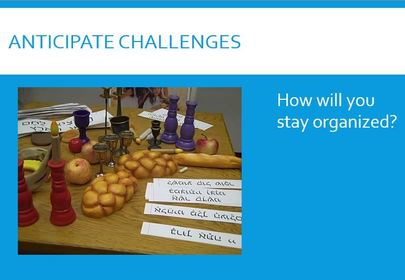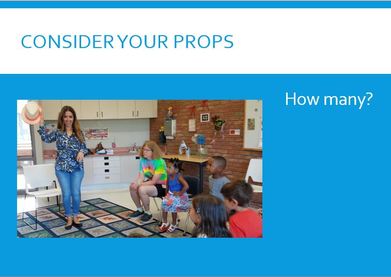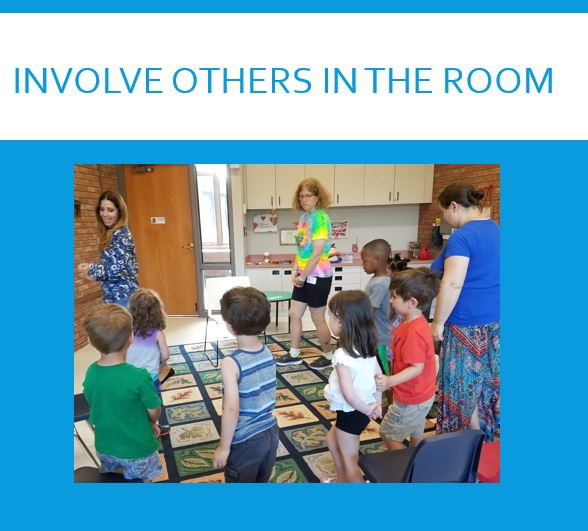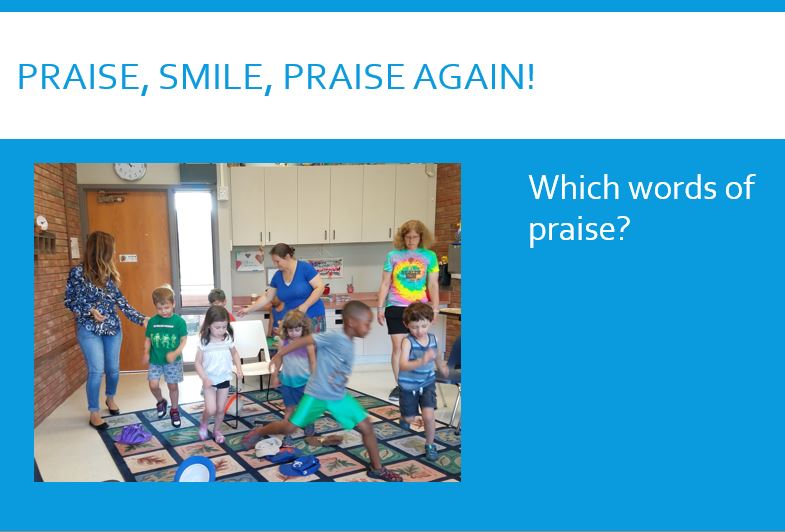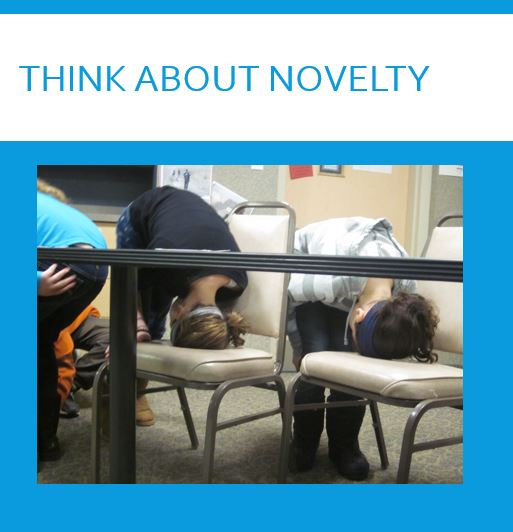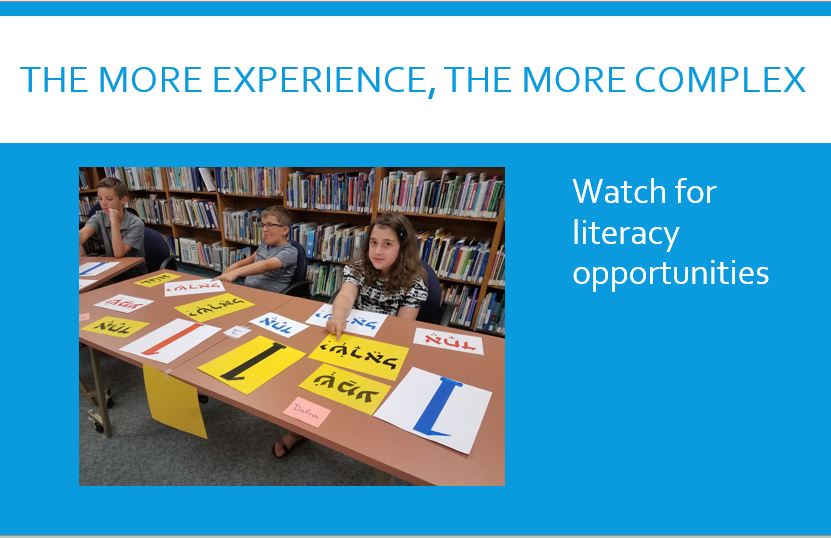mastering htm teaching
Below are a number of tips for mastering HTM teaching. If you are a teacher, it would be helpful to review the tips a few times a year, checking to see what you are now doing well and what you might wish to work on. If you are a supervisor or director, the tips provide clues where you might open conversation with your teacher(s), helping them better consider and implement the many elements of masterful HTM teaching!
Want more assistance? Definitely check out the rubric on the last few pages of your curriculum guide - your goal is to score "roses," fully in the right column.
Feel free to post your thoughts to the "Hebrew Moves Me!" Facebook group. The tips below, were all posted there in the fall of 2018 - start a new thread or search for the old ones.
Want more assistance? Definitely check out the rubric on the last few pages of your curriculum guide - your goal is to score "roses," fully in the right column.
Feel free to post your thoughts to the "Hebrew Moves Me!" Facebook group. The tips below, were all posted there in the fall of 2018 - start a new thread or search for the old ones.
|
MASTERING HTM #1 - Get started by plotting out the year's trajectory, especially if you are teaching students beyond their second HTM year. Consider how many focused review sessions you want to have at the beginning, which holiday segments will be reviewed and which newly taught, what prayers or blessings will be covered, and whether you will be able to integrate some print literacy. As with other curriculum, HTM deserves planning, so enter this year with a goal for learning and a path to get there.
|
MASTERING HTM #2 - While you may be tempted to "wing it," creating a daily script ensures that your lesson makes best use of your 15 minutes. Write out your sentences, know how one segment will flow into another and make sure you consider which props will best support learning. The early lessons in the curriculum guide offer script suggestions, but the later ones will need your full creativity. Remember that teachers working with prayers and blessings will find planning supports on the Hebrew Through Movement website.
MASTERING HTM #3 - It almost goes without saying (but we'll say it anyway) that practicing your script will bring Hebrew to life for your students. Practicing aloud will help you consider and plan for transitions, keep the pace up, ensure that your language is correct, anticipate how you'll use your props and where you'll place them in your space. Practice, practice, practice!! |
|
MASTERING HTM #4 - There are two principles of threes to explain. This is the first: Aim to introduce three new terms at a time. Just teaching one new word doesn't offer much challenge. Two new words give students a 50% chance of guessing the correct response. But three words introduced in each lesson segment offers a bit of complexity... and that's what you want to create for your students. Sure, there are times when you'll introduce two and others when you'll do four. But three is what you want to aim for. How will you decide? Remember tip #2 - plan!!
|
MASTERING HTM #5 - This is the second principle of three (for the first check tip #4). As you plan your 15 minute lesson, remember to create three distinct segments. The first is your warm-up, a review of past words and phrases.
BUT here's the master tip - when you have small groups participating in the warm-up, have each "up" for only 3-4 commands before moving onto another group. Don't make the mistake of keeping a small group moving for 3ish minutes - the rest of the students will lose attention. Warm 'em up, but make sure to pay attention to your pacing. |
|
MASTERING HTM #6 - There are two master moves for the middle part of each lesson. The first is to clearly say and introduce new terms. For instance, don't add extra vocab like זה זאת to nouns - you want students to only hear each term by itself.
|
Mastering HTM #6 (con't) - The second master move for the middle part of the lesson is to leverage the power of the sentence pattern to help students learn to listen for the verb and the noun/object. Recognizable grammatical patterns assist with meaning-making.
|
|
MASTERING HTM #7 - A lesson's "principle of three" has 1) a warm-up, 2) introduction of new vocabulary and 3) a final section that integrates old and new learning. This last section of learning is the time to find novel ways of combining vocabulary, i.e., keeping students on their toes.
Consideration should also be given to how you will conclude your lesson. Besides clapping (למחוא כפים - a standard ending), how else might you spend your last minute or two so that students again hear or work with the new words introduced? |
MASTERING HTM #8 - Challenges can knock us down when we don't anticipate that tthey are sneaking up on us! This HTM tip is addressed to all you native English speakers >>> anticipate when you might be inclined to shift into English. Don't be tempted to say, "Okay everyone, look at me. I have a new word for you." Just point to yourself, pause, point to the students and then wag your finger as if to say "no" - your goal is to pantomime the message that students are to watch you, not do it themselves.
Have a student who's a bit out of control? Don't succumb to saying, "Sami - Keep your hands to yourself!" If you need to deal with the situation, go over to the child and talk softly in his/her ears about expected behavior. Your goal is to keep Hebrew flowing as the language focus of the classroom. HOWEVER, if there is ever a safety issue in the room, feel free to quickly shift into English. |
|
MASTERING HTM #9 - Israelis, this tip is for you! Your challenge is to stick with HTM Hebrew sentence patterns (להרים ספר) and not shift to spoken Hebrew in the middle of your lesson (?איפה המחברת - מישהו יודע). It's not easy, but we KNOW you can do it!!
Keep it simple. Make sure that the students always understand the Hebrew you speak! :-D |
MASTERING HTM #10 - A baby spends months and months of listening to language before attempting to speak. "Aquisitional language learning" also has a silent period, time when a learner listens and reacts to the language rather than repeating words, offering commands, or answering questions. It's "shhh" ... silent! For HTM, this usually extends over 10ish class hours.
So, what does it mean to honor the silent period? You, the teacher need to do the speaking, not the children. If your students start to recite the words in unison, shake your head no and point to yourself. Keep them listening and reacting! |
|
MASTERING HTM #11 - A few years ago, in the first week in September, a first year teacher posted to this group saying that she felt like she had just completed a pilates class! She was exhausted and sore, constantly, getting up and down (לקום - לשבת - לקום).
BUT once you have introduced new vocabulary, your challenge as a teacher is to give a command and then STAND STILL. You want students to demonstrate that they know the new word by initiating the movement, not you. Yep, there are times you will need to give a clue, and yes, students may look at each other for support. But you, the teacher need to practice standing still after giving commands that students have learned already. Give it a try! |
MASTERING HTM #12 - You've planned and you've practiced, but have you give thought to "sight-lines" - if students can see your props AND the action of others? On the one hand, you want to have all materials organized and close by (see the photo with tip #3 for a great example). You want to make it easy-enough for students to see any props and posters you've brought to support your lesson. The set-up in the photo below forces students to twist and turn to see materials (though to be fair to this teacher, she was in another person's room when photographed ... indeed, the photo is just offered as an example).
On the other hand, sight-lines also come into play when a small group of students are following commands, moving around the room. You don't want them to end up out of the sight of the other students. You want everyone to remain involved all the time, even if they aren't the ones "up" following your commands. That can only happen when everyone can see all the action all the time. Not everyone has an ideal room set-up, but your task as teacher is to consider the flow of the space and placement of props/materials. How will you address the challenge? |
|
MASTERING HTM #13 - Fifteen minutes is a very short period of time and most teachers have very little time between classes, whether they have their own space or travel from room to room. Giving thought to prop organization will help you and your students move through your lesson more smoothly. Check out the first four videos on this page for more thoughts on props: https://www.hebrewthroughmovement.org/teacher-tips.html
|
MASTERING HTM #14 - Props! How fun is that? There will be times when you want to work with one something with the entire group and other times when you want one prop per student. The choice is yours, but if you can manage to put something in each student's hands, you have a better chance of keeping everyone engaged!
|
|
MASTERING HTM #15 - Here's an interesting challenge - how will you involve the "regular" teacher and madrich(im) who (hopefully) remain with you during the HTM lesson? There are so many roles these people can play:
* Shadow/assist any students who have learning or behavioral challenges * Offer energy - when you say לקפוץ they jump fast and furiously! :-D * Assist with observing and assessing student learning in the midst of normal teaching, using the forms at the back of the curriculum guide * Offer you feedback on teaching ("Any thoughts on how better to engage Carly?" or "How can I better use HTM with the Avot blessing to help your teaching?") * And more! Ideally, these "non-students" are open to you engaging them in the lesson, calling on them to be part of a small group and the full class. They are your partners in this!! |
MASTERING HTM #16 - Here's my favorite sequence of photos taken this summer during the Master Teacher certification seminar. The first one is with everyone's hands in the air except for the girl on the right. Look at them carefully as the slide show plays, paying attention to the girl, especially in relation to the movements of the other students. It's a great illustration of HTM as a social learning experience and explains why it's so important to GROUP students, never to have them follow commands individually.
If this girl had been called on solo, she'd probably have felt unsuccessful, embarrassed and concerned about participating in class in the future. But watch the changes in her expression throughout the sequence - she uses the supports around her, feels part of the group, and looks happy! She knows that she can look to others because her teacher explicitly told the class it was okay. To the credit of all HTM teachers, I have never seen students looking put-out when classmates follow the actions of others in the room. They understand that this is not cheating, it's just expected behavior. The moral of this story? Remember to always keep students in pairs, small groups or as a whole class. Leverage your social learning opportunities! |
|
MASTERING HTM #17 - Those of you working with students in Grades 4-6 with at least of year of HTM will hopefully be moving into prayers and blessings at this time of year (yes, the holidays are done!) Lots of supports are offered to you on the HTM website including help with word choices (which ones might you focus on?), script ideas and photo props to make your teaching easier.
You'll find them on the HTM website: https://www.hebrewthroughmovement.org/shma-and-its-blessing… and https://www.hebrewthroughmovement.org/amidah.html and https://www.hebrewthroughmovement.org/miscellaneous-prayers… The Curriculum guide also offers some ideas on pages 125+ |
MASTERING HTM #18 - So really, how many different ways can teachers group kids? Here are three that are NOT gender-based.
|
|
MASTERING HTM #20 - Back to the subject of props! There's an interesting debate between fake (but sturdy) ones, and authentic objects. Dr. Lifsa Schachter, originator of HTM, encourages putting multiple versions of authentic items in students' hands so that learning is not about toys, but rather real connections to Jewish life via our very special language! How can you increase your collection? Ask families for donations of objects no longer in use at home. But all that said - yes, you may want to attain some fake (but sturdy) ones! Variety is good!!
|
|
Mastering HTM #22 - Memorable HTM lessons have lots of energy with great pacing and moments of novelty ... you know, the times when learners are asked to follow unexpected commands.
|
MASTERING HTM #23 - So here we are at the last of the start-the-year tips! There are times when I hear that HTM teachers have "covered everything" OR they sigh and say that students are bored with HTM. If either feels true for you, there's a good chance that you aren't adding complexity to your lessons, that you're not growing the learning as your students mature. This might means using HTM to teach the vocabulary of prayers and blessings OR to work with print. There are SOOO many possibilities! Use this year to deepen your practice with Hebrew Through Movement. And really, have fun!
|
